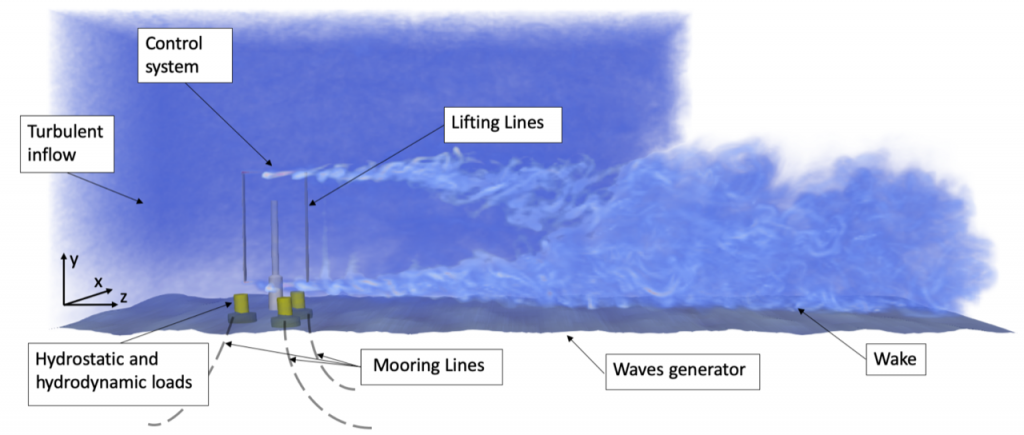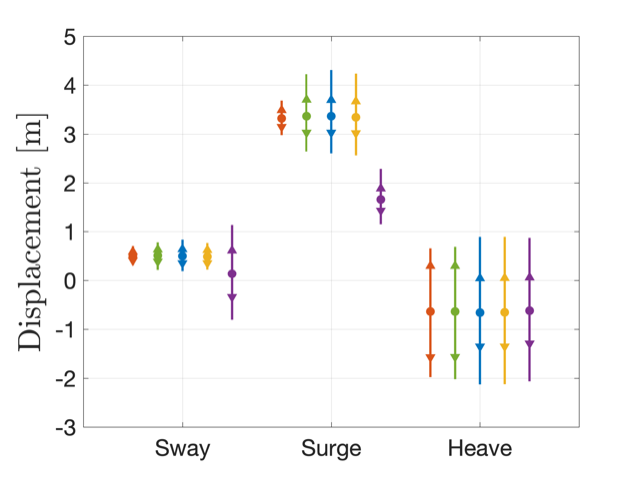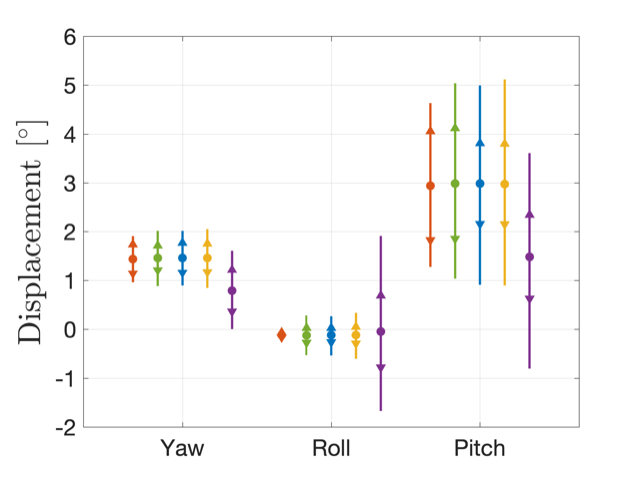
Floating Offshore Vertical Axis Wind Turbines (FOVAWT) have known a growing interest over the last decades. Indeed, offshore turbines are usually subject to stronger and steadier wind compared to onshore machines, promising a higher energy production. Moreover, VAWTs combine the advantages of being insensitive to the wind direction while having a lower centre of gravity. This makes them better suited for floating applications than their horizontal counterpart.
These incentives have spurred the development of various projects involving FOVAWTS (DeepCwind, SeaTwirl, S4VAWT, Nenuphar,…) and have led to extensive researches. However, accurate numerical simulations of floating wind turbines require sophisticated aero-hydro-servo-elastic solvers, which often demand a trade-off between accuracy and computational cost.
To provide such an accurate simulation framework, Robotran was coupled to a state-of-the-art CFD method called the Vortex Particle-Mesh (VPM) method developed at UCLouvain. This innovative framework takes advantage of the computationally efficient parallel implementation of the fluid solver and benefits from the symbolic treatment of the direct dynamics in Robotran. As a result, it enables the Large Eddy Simulation of the flow past complex aerodynamic devices such as helicopter rotors [1].

In the present research [2], an H-shaped VAWTs mounted on a semi-submersible platform (see Fig. 1). The coupled simulations solve the flow together with the 6-degrees of freedom (DOF) motion of the platform under the influence of the rotor loads, the hydrostatic and hydrodynamic loads on the floats, and the mooring lines. Realistic conditions are obtained by introducing a turbulent inflow with atmospheric shear and by imposing an erratic sea wave profile in a simulation domain that extends ten diameters downstream of the machine. We leverage the potential of this method to identify the prominent environmental factors affecting the motions and wake dynamics of a FOVAWT. We consider 4 cases
We further demonstrate the efficiency of the computational framework in the study of two interacting FOVAWTs and we assess the subsequent effects on the floating dynamics of the waked turbine (see Fig. 2).


Contributors
Pierre Balty, Simon Buffin, Denis-Gabriel Caprace, Philippe Chatelain, Nicolas Docquier, Matthieu Duponcheel
References
[1] Denis-Gabriel Caprace, Philippe Chatelain, Grégoire Winckelmans, Wakes of rotorcraft in advancing flight: A large eddy simulation study, in Physics of Fluids, vol. 32, 8, pp. 087107, 2020, doi: doi.org/10.1063/5.0015162.
[2] Pierre Balty, Denis-Gabriel Caprace, Juan Waucquez, Marion Coquelet, Philippe Chatelain, Multiphysics simulations of the dynamic and wakes of a floating Vertical Axis Wind Turbine, vol. 1618, pp. 062053, 2020, doi: doi.org/10.1088/1742-6596/1618/6/062053.